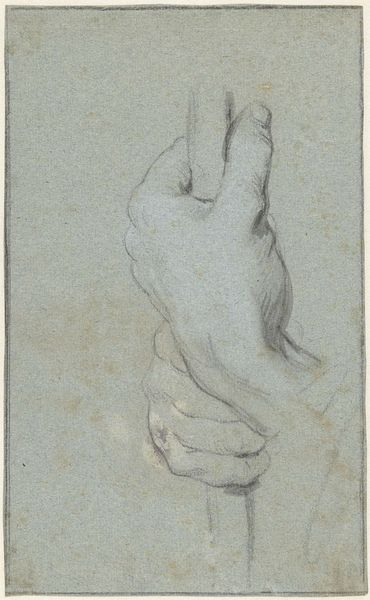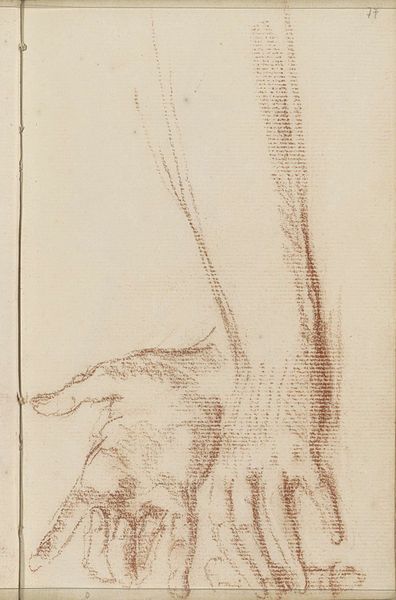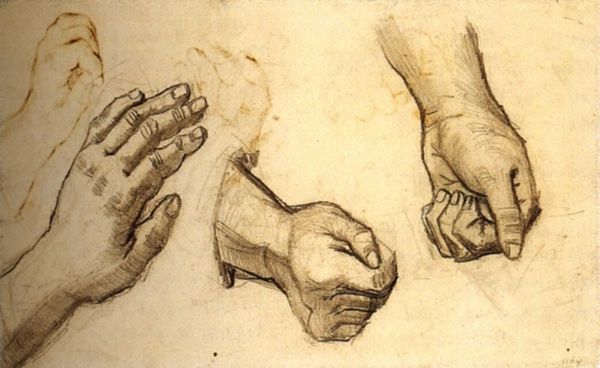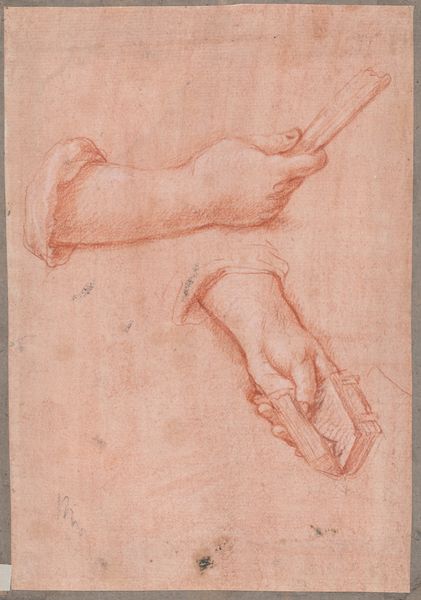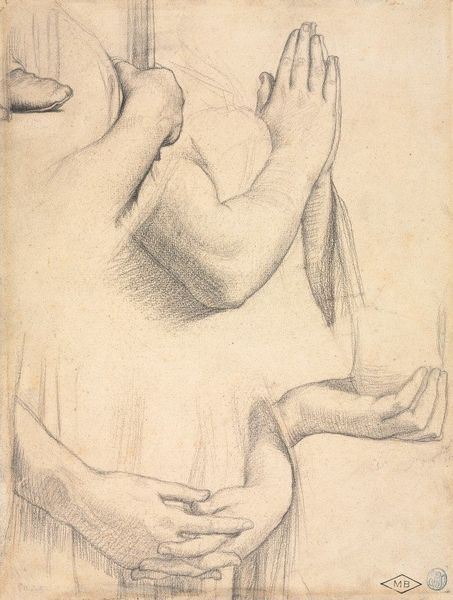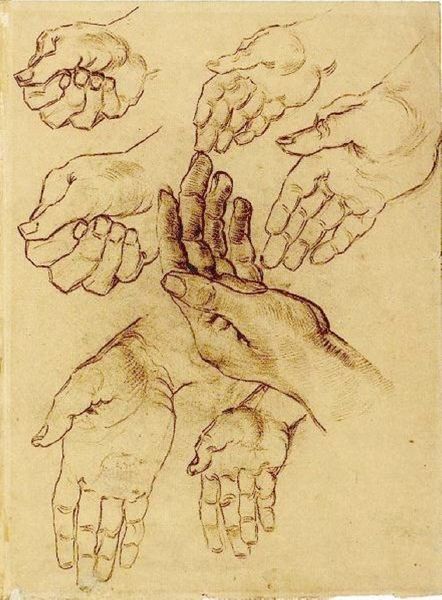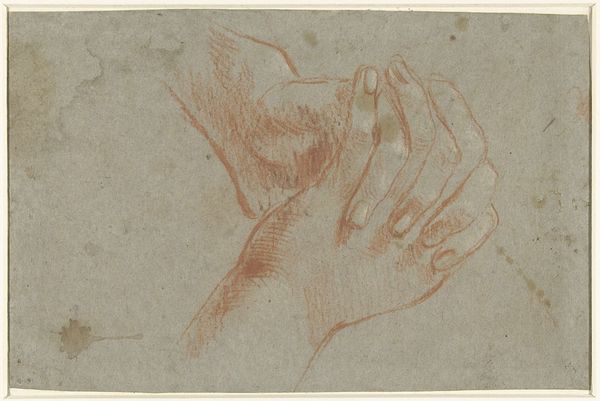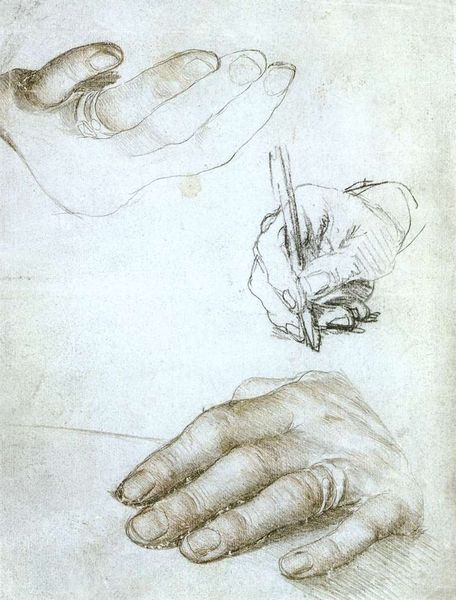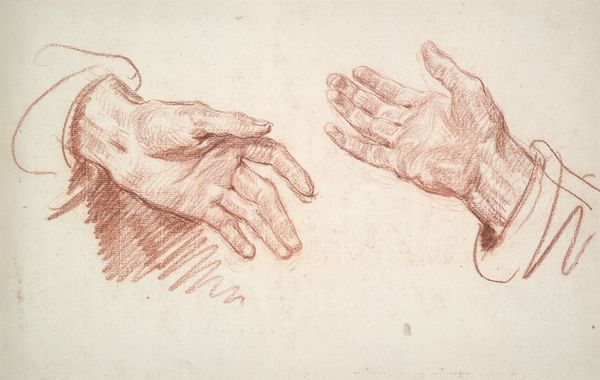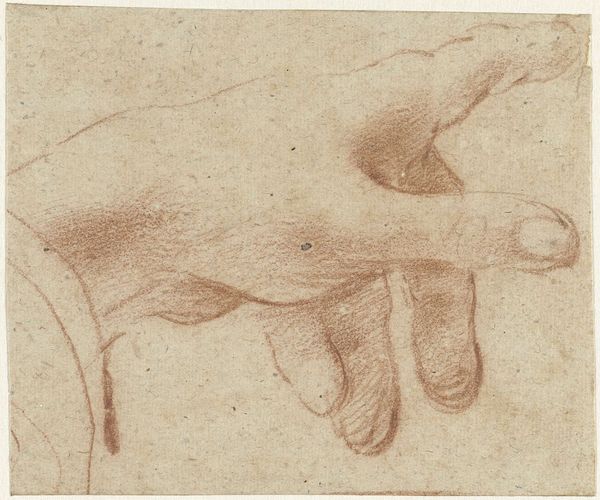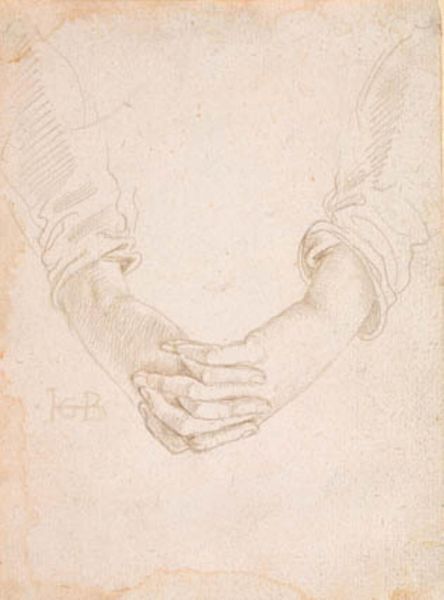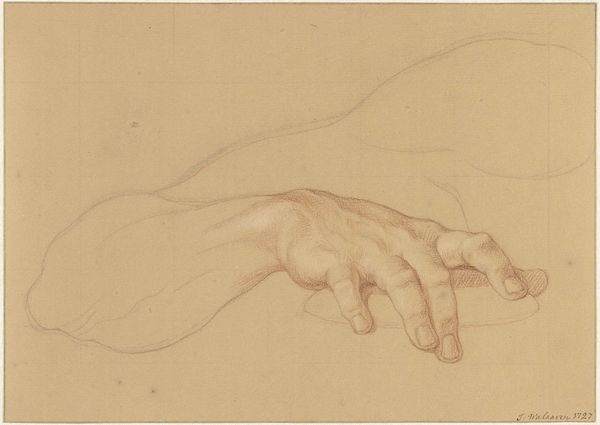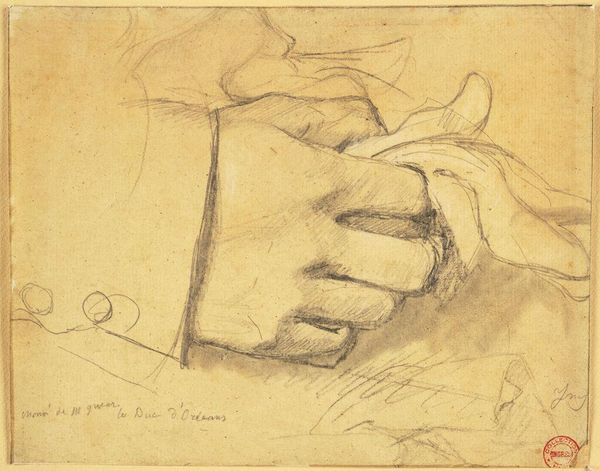
drawing, paper, pencil
#
portrait
#
drawing
#
impressionism
#
charcoal drawing
#
figuration
#
paper
#
pencil drawing
#
pencil
#
human
#
academic-art
Copyright: Public domain
Vincent van Gogh made this drawing with pencil on paper, an anatomical study of hands, in the Netherlands, during the 1880s. It’s difficult to date it precisely, but the image clearly reflects the artist's deep interest in the lives of peasants and laborers. Van Gogh's artistic path was intertwined with his religious and social concerns. His early ambition was to become a pastor like his father and his empathy for the working class led him to the Borinage region, a coal-mining area in Belgium. This drawing is a testament to Van Gogh's commitment to portraying the dignity of labor, a theme that resonated with the socialist movements gaining momentum in Europe at the time. His representations of hands, in particular, emphasize the physical labor and the connection to the land and in their raw state, these hands also question academic conventions. To understand Van Gogh's art, one must delve into the literature, social and political history of the late 19th century, and the art institutions of the time.
Comments
No comments
Be the first to comment and join the conversation on the ultimate creative platform.
